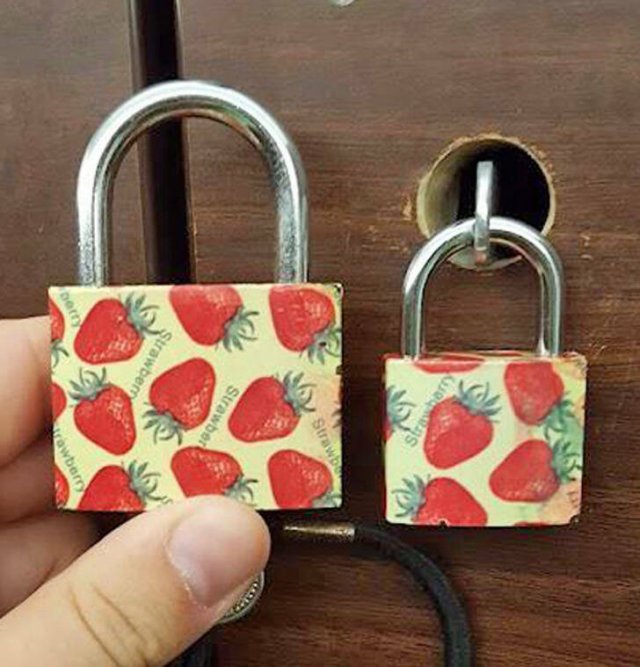Log in
Statistics
We have 475 registered usersThe newest registered user is Menupanda
Our users have posted a total of 44913 messages in 6629 subjects
THAT’S ENTERTAINMENT
CLICK ON ANY OF THESE LINKS TO FIND OUR EXTREME ENTERTAINMENT
UPDATED :
71 WGT TUTORIALS & 32 YOUNG46 TUTORIALS
CLICK HERE TO SEE OVER 100 YOUTUBE VIDEO TUTORIALS . FROM WGTers , WGT & YOUNG46 FORUM UPDATE
TO THE MANY WELCOME GUESTS . THIS FORUM IS NO LONGER A COUNTRY CLUB WEBSITE FOR A WGT COUNTRY CLUB . PLEASE FEEL FREE TO READ THE FORUMS.
THERE ARE MANY TOPICS OF INTEREST . OR NOT . THIS WEBSITE IS AN INFORMATION AND ENTERTAINMENT WEBSITE ONLY .
MUCH OF THE CONTENT IS ARCHIVES OF PURPOSES PAST .
THERE ARE SOME MORE CURRENT TOPICS .
REGISTRATION IS NOT NECESSARY TO READ THROUGHOUT .
REGISTRATION IS EASY AND FREE . THIS IS AN AD FREE WEBSITE . NOTHING IS EVER REQUESTED FROM REGISTERED MEMBERS .
REGISTRATION ENABLES COMMENTING ON TOPICS . POSTING NEW TOPICS . FULL ACCESS TO THE WEBSITE IMAGE HOST . WHICH IS A VERY COMPLETE AND CONVENIENT TOOL .
PLEASE ENJOY .
TIER & AVERAGE REQUIREMENTS
BASIC LEVEL AND AVERAGE REQUIREMENTS , AND SATURATION

WHILE YOUR HERE
WHILE YOUR HERE :
CHECK OUT THE INCREDIBLE PHOTOGRAPHY IN
MY SERIES
THIS USED TO BE THE HOME OF OUR WORLD CLOCK . WHICH CAN NOW BE FOUND IN ITS OWN FORUM ON THE MAIN PAGE ..
THERE ARE MORE WORLD CLOCKS INSIDE HERE .
WORLD CLOCK
FB Like
TRIVIA GENIUS * AZTEC EMPIRE *
Page 1 of 1
 TRIVIA GENIUS * AZTEC EMPIRE *
TRIVIA GENIUS * AZTEC EMPIRE *
8 Facts You Might Not Know About the Aztec Empire

History
8 Facts You Might Not Know About the Aztec Empire
08 | 03 | 2021
August 2021 marks the 500th anniversary of the Aztec empire’s fall to Spanish conquistadors following a months-long siege on its capital city in 1521. Five centuries later, history buffs can’t seem to learn enough about the fascinating history of the legendary Aztec civilization, with secrets still being physically unearthed below the streets of Mexico City. Here are some of the fascinating facts unearthed regarding the daily life of this once-thriving society.
 Credit: WitR/ Shutterstock
Credit: WitR/ Shutterstock
Like many ancient societies, much of what we know about the Aztecs comes from written accounts from outside their culture — in this case, descriptions from Spanish conquistadors who arrived in modern-day Mexico around 1519. However, the community modern historians call “the Aztecs” actually referred to themselves as the Mexica or Tenochca people. Both names come from the region where the empire once flourished — Southern and Central Mexico, along with the capital city of Tenochtitlan (modern-day Mexico City). The Aztec name likely comes from the Mexica origin story describing their homeland of Aztlan (the location of which remains unknown).
 Credit: Werner Forman/ Universal Images Group via Getty Images
Credit: Werner Forman/ Universal Images Group via Getty Images
Surviving accounts from Spanish colonists describe the Aztec’s voluminous libraries, filled with thousands of books on medicine, law, and religion. But early historians didn’t give the Aztecs enough credit when it came to written language skills, once considering the hieroglyphic style used by scribes as primitive. Few written documents have survived the centuries since the Aztec empire’s disappearance, most destroyed by Spanish conquistadors. But more recent evaluation of the last remaining texts shows that the Mexica people had a sophisticated writing system on par with Japanese that may have been the most advanced in the early Americas.
 Credit: Millionstock/ Shutterstock
Credit: Millionstock/ Shutterstock
Mesoamerican calendars from societies of old have remained an interest to many people, especially those who speculate about astrological events or end of the world scenarios. But calendars used by the Aztecs weren’t too dissimilar from our own. The Mexica people relied on two simultaneous calendars: one 365-day solar calendar called the Xiuhpōhualli and a 260-day religious almanac called the Tōnalpōhualli. The solar calendar consisted of 18 months with 20 days, each month named for a significant festival or event. The religious calendar dictated auspicious times for weddings, crop plantings, and other events, using a 13-month calendar with each day represented by an animal or natural element instead of numerals.
 Credit: DEA / G. DAGLI ORTI via Getty Images
Credit: DEA / G. DAGLI ORTI via Getty Images
Constructing the city of Tenochtitlan was no small feat for the early Aztec settlers, mostly because the city was built on water. While centered on an island within Lake Texcoco, the city expanded across the lake with bridges that reached its shores with aqueducts and canals that supplied Tenochtitlan with fresh water. Farmland wasn’t vastly available on an island of more than 400,000 people, leading Mexica farmers to create floating fields called chinampas. Gardens were constructed by weaving tree branches, reeds, and sticks between poles to create an anchored base covered with mud and dead plants that broke down into nutritious soil. Chinampas doubled as a sanitation system using human waste as fertilizer, which helped crops grow vigorously while protecting drinking water from contamination.
 Credit: Nina Krogh/ Shutterstock
Credit: Nina Krogh/ Shutterstock
Ever noticed how centuries-old paintings still have strikingly deep red pigments? European artists of the past were introduced to scarlet tones thanks to the Aztecs. Heavily saturated red pigments weren’t easy to come by before the early 1500s when many hues were created from mixtures of cow manure, animal blood, and rancid oils; which explains why Spanish conquistadors who first met the Mexica people in the 1520s were stunned by the regular use of deeply pigmented red paints and dyes. Aztec artisans created the hues by crushing cochineal bugs, a beetle-like insect native to Mexico and South America, to create a vibrant powdered dye. By the mid-1500s, cochineal dye was commonly traded across Europe for coloring clothing and paint and became one of Spain’s most profitable markets by the end of the 16th century. Cochineal bug dye diminished in popularity by the mid-1800s when synthetic pigments became available, though it remains a commonly used dye in food products — proof that while the Aztec empire may have disappeared five centuries ago, it still leaves a mark on our world today.

History
8 Facts You Might Not Know About the Aztec Empire
08 | 03 | 2021
August 2021 marks the 500th anniversary of the Aztec empire’s fall to Spanish conquistadors following a months-long siege on its capital city in 1521. Five centuries later, history buffs can’t seem to learn enough about the fascinating history of the legendary Aztec civilization, with secrets still being physically unearthed below the streets of Mexico City. Here are some of the fascinating facts unearthed regarding the daily life of this once-thriving society.
They Didn’t Call Themselves Aztecs
 Credit: WitR/ Shutterstock
Credit: WitR/ ShutterstockLike many ancient societies, much of what we know about the Aztecs comes from written accounts from outside their culture — in this case, descriptions from Spanish conquistadors who arrived in modern-day Mexico around 1519. However, the community modern historians call “the Aztecs” actually referred to themselves as the Mexica or Tenochca people. Both names come from the region where the empire once flourished — Southern and Central Mexico, along with the capital city of Tenochtitlan (modern-day Mexico City). The Aztec name likely comes from the Mexica origin story describing their homeland of Aztlan (the location of which remains unknown).
The Aztec Language is Still Alive Today
At the height of the Aztec empire’s reign, Nahuatl was the primary language used throughout Mexico and had been for centuries. Colonists arriving from Spain around the early 16th century introduced Spanish, modern-day Mexico’s official language, which would eventually replace Nahuatl. But the indigenous language isn’t at all dead; more than 1.5 million people speak Nahuatl in communities throughout Mexico, along with efforts in the southern U.S. to teach and revive the language. Spanish and English speakers who’ve never heard Nahuatl still can pinpoint a few words with Aztec origins, such as tomato (“tomatl”), coyote (“coyōtl”), and chili (“chīlli”).The Aztec Empire Had Vast Libraries
 Credit: Werner Forman/ Universal Images Group via Getty Images
Credit: Werner Forman/ Universal Images Group via Getty ImagesSurviving accounts from Spanish colonists describe the Aztec’s voluminous libraries, filled with thousands of books on medicine, law, and religion. But early historians didn’t give the Aztecs enough credit when it came to written language skills, once considering the hieroglyphic style used by scribes as primitive. Few written documents have survived the centuries since the Aztec empire’s disappearance, most destroyed by Spanish conquistadors. But more recent evaluation of the last remaining texts shows that the Mexica people had a sophisticated writing system on par with Japanese that may have been the most advanced in the early Americas.
The Mexica People Were Highly Educated
Aztec society had a rigid caste system dividing communities into four main classes: nobility, commoners, laborers, and enslaved people. Regardless of social standing, every child in the community attended school to receive specialized education, often for a role that was chosen at birth. Schools were divided by gender and social standing, though all Mexica children learned about religion, language, and acceptable social behavior. Children of nobility often received law, religion, and ethics training to prepare them for future leadership positions, and schools for commoners taught trade skills like sculpting, architecture, and medicine. Because Aztec culture centered on expansion and advancement through military strategy, teenage boys of all ages received military and combat training, while girls were educated in cooking, domestic tasks, and midwifery.Aztecs Used Two Calendars
 Credit: Millionstock/ Shutterstock
Credit: Millionstock/ ShutterstockMesoamerican calendars from societies of old have remained an interest to many people, especially those who speculate about astrological events or end of the world scenarios. But calendars used by the Aztecs weren’t too dissimilar from our own. The Mexica people relied on two simultaneous calendars: one 365-day solar calendar called the Xiuhpōhualli and a 260-day religious almanac called the Tōnalpōhualli. The solar calendar consisted of 18 months with 20 days, each month named for a significant festival or event. The religious calendar dictated auspicious times for weddings, crop plantings, and other events, using a 13-month calendar with each day represented by an animal or natural element instead of numerals.
Farmers Created Floating Fields
 Credit: DEA / G. DAGLI ORTI via Getty Images
Credit: DEA / G. DAGLI ORTI via Getty ImagesConstructing the city of Tenochtitlan was no small feat for the early Aztec settlers, mostly because the city was built on water. While centered on an island within Lake Texcoco, the city expanded across the lake with bridges that reached its shores with aqueducts and canals that supplied Tenochtitlan with fresh water. Farmland wasn’t vastly available on an island of more than 400,000 people, leading Mexica farmers to create floating fields called chinampas. Gardens were constructed by weaving tree branches, reeds, and sticks between poles to create an anchored base covered with mud and dead plants that broke down into nutritious soil. Chinampas doubled as a sanitation system using human waste as fertilizer, which helped crops grow vigorously while protecting drinking water from contamination.
Aztecs Wore the First Rubber-Soled Shoes
Centuries before rubber became an everyday mainstay in modern products, the ancient Mexica people were harvesting and collecting rubber tree sap for a variety of uses. Archaeological digs throughout Mesoamerica have excavated rubber balls likely used in ceremonial games or for religious offerings, but historians in the early 2000s found that Aztecs also created rubber soles for more comfortable and protective shoes. Researchers believe that Mexica crafters blended and heated rubber tree sap and extract from plants to create the rubber mixture, which could then be shaped and used for shoes, rubber bands, statues, and more.Mexicas Introduced the World to Super-Red Dyes
 Credit: Nina Krogh/ Shutterstock
Credit: Nina Krogh/ ShutterstockEver noticed how centuries-old paintings still have strikingly deep red pigments? European artists of the past were introduced to scarlet tones thanks to the Aztecs. Heavily saturated red pigments weren’t easy to come by before the early 1500s when many hues were created from mixtures of cow manure, animal blood, and rancid oils; which explains why Spanish conquistadors who first met the Mexica people in the 1520s were stunned by the regular use of deeply pigmented red paints and dyes. Aztec artisans created the hues by crushing cochineal bugs, a beetle-like insect native to Mexico and South America, to create a vibrant powdered dye. By the mid-1500s, cochineal dye was commonly traded across Europe for coloring clothing and paint and became one of Spain’s most profitable markets by the end of the 16th century. Cochineal bug dye diminished in popularity by the mid-1800s when synthetic pigments became available, though it remains a commonly used dye in food products — proof that while the Aztec empire may have disappeared five centuries ago, it still leaves a mark on our world today.
 Similar topics
Similar topics» TRIVIA GENIUS QUIZ
» TRIVIA GENIUS QUIZ
» TRIVIA GENIUS *What does "Volkswagen" mean?*
» TRIVIA GENIUS QUIZ
» TRIVIA GENIUS * What is the name of the dog in "Garfield"? *
» TRIVIA GENIUS QUIZ
» TRIVIA GENIUS *What does "Volkswagen" mean?*
» TRIVIA GENIUS QUIZ
» TRIVIA GENIUS * What is the name of the dog in "Garfield"? *
Page 1 of 1
Permissions in this forum:
You cannot reply to topics in this forum
 Events
Events















































































» MAY NATIONAL CELEBRATION DAYS MAY 14 2024
» QUIZ DAILY QUIZ * True or false: The 1960 hit “Puppy Love” was sung by Paul Anka. *
» QUIZ DAILY ANSWER PAGE
» *POPULAR CONTENTS* Valley of the SUN Official Newsletter
» Merriam - Webster Word of the day * Instigate *
» WORD DAILY Word of the Day: * Accede *
» Word Genius Word of the day * Regalia *
» HISTORY FACTS * What a city street looked like 100 years ago *
» HISTORY FACTS *The biggest myth of the Oregon Trail *
» MAY NATIONAL CELEBRATION DAYS MAY 13 2024
» MAY NATIONAL CELEBRATION DAYS MAY12 2024
» MAY 12 MOTHER'S DAY
» MAY NATIONAL CELEBRATION DAYS MAY 11 2024
» WebMD * How to Get Rid of Blue Balls *